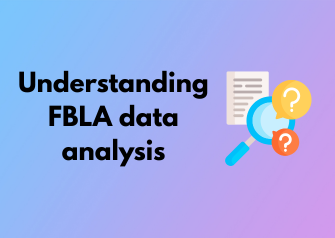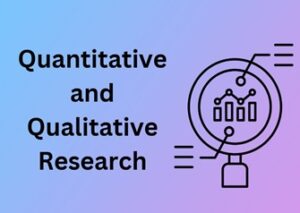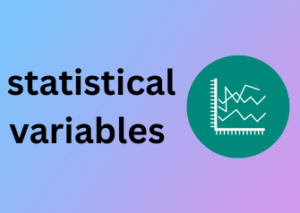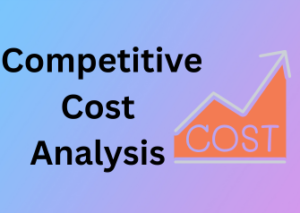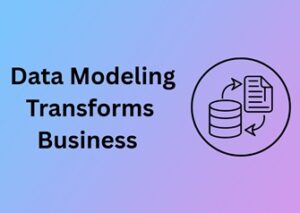Welcome to this exciting dive into the intersection of FBLA (Future Business Leaders of America) and the world of data analysis! If you’ve ever wondered how these two concepts go hand-in-hand, pull up a chair—let’s have a chat. Today, we’re setting the stage by exploring the very backbone of this dynamic synergy. No tech jargon, just approachable and actionable info to help you get started.
What is FBLA?
First, let’s make sure we’re all on the same page about FBLA. This wonderful organization is focused on developing tomorrow’s business leaders, providing students with opportunities to enhance their skills, explore career pathways, and prepare for the ever-changing workforce. It’s all about fostering confidence, communication skills, and leadership qualities in young individuals.
The Basics of Data Analysis
Now, what about data analysis? Simply put, it’s the process of making sense of raw data to uncover trends, insights, and actionable knowledge. Whether you’re visualizing numbers through graphs or making sense of survey responses, data analysis helps us make better, informed decisions.

Why Should FBLA Care About Data Analysis?
“But wait,” you might ask, “why does data analysis matter for FBLA specifically?” Great question! Here are a few specific reasons:
- Strategic Planning: FBLA chapters can use data insights to plan effective events, recruit more members, and allocate resources wisely.
- Membership Trends: Data can reveal patterns in member engagement, helping leaders discover what works and what doesn’t.
- Improving Performance: Competitions and civic projects within FBLA benefit from understanding feedback and performance data.
How Does Data Analysis Shape FBLA Initiatives?
At its core, using data gives FBLA decision-makers an analytical edge. Think about how a chapter might notice declining attendance at meetings. Instead of guessing the cause, members could collect survey results or attendance numbers over time and find the root problem (say, conflicting schedules). Armed with this knowledge, they can redesign meeting times to better suit everyone’s needs, ultimately boosting participation.
Data analysis is particularly helpful when creating goals for chapter growth. By setting measurable objectives using numbers (e.g., “increase membership by 10% over the next year”), leaders can track their progress—and celebrate successes—more effectively.
Becoming Comfortable With Data in FBLA
Let’s be real: not everyone feels confident diving into the world of data analysis, and that’s okay! You don’t need to be a statistician to get started. Here are a couple of small but impactful ways FBLA members and leaders can engage with data analysis:
- Start Simple: Begin by tracking basic numbers like chapter attendance, fundraiser revenue, or competition outcomes using beginner-friendly tools like spreadsheets.
- Ask Questions: Data becomes meaningful when you ask the right questions, like “Why did this event succeed, and how can we replicate that success?”
The Importance of Data: A Key Driver for FBLA Success
Let’s face it—data is everywhere, and in today’s fast-paced world, it’s one of the most powerful tools any organization can wield. For Future Business Leaders of America (FBLA), data is much more than just numbers and spreadsheets—it’s the backbone of informed decisions, strategic growth, and organizational success. Understanding the importance of data is crucial to thriving in modern leadership and business environments. So, let’s dive into why data plays such a pivotal role in FBLA’s journey to success!
The Foundation of Smart Decision-Making
At the core of FBLA’s success lies its ability to make impactful decisions. But how do you decide which initiatives to pursue, which programs to expand, or where to allocate resources? The answer: data. By analyzing attendance records, fundraising patterns, event feedback, and membership growth, FBLA chapters can gain valuable insights into what’s really working—and what isn’t. Numbers don’t lie; they tell a story. The job of FBLA leaders is to read and act on that story.
Unlocking Patterns and Trends
Here’s a fun fact: trends don’t form by accident. Whether it’s spotting a rise in the popularity of entrepreneurship workshops or realizing a dip in participation during certain times of the year, data helps connect the dots. Keeping an eye on these patterns enables FBLA to anticipate challenges, seize opportunities, and stay ahead of the curve. After all, being proactive rather than reactive is a hallmark of exceptional leadership.
Why Data Makes FBLA Goals Achievable
Let’s talk about goals—every FBLA chapter has them, from increasing membership to amplifying community impact. The good news? Data is like a roadmap, showing you exactly how far you’ve come and how far you still need to go. Here’s how you can leverage it to meet your goals:
- Measure Progress: Track whether your chapter is growing by comparing membership numbers year over year.
- Spot Success Stories: Pinpoint which events or efforts bring the best results, so you can replicate them.
- Set Smart Goals: Use data to define specific, measurable, and realistic objectives. For example, instead of saying, “We want more members,” you might say, “We aim to increase membership by 20% within six months.”
Fueling Innovation and Creativity
Most people don’t associate creativity with data, but the truth is, the two go hand in hand. By analyzing data, FBLA members can identify unmet needs or areas for improvement, sparking innovative solutions. For instance, does the data show declining participation among certain members? Maybe it’s an opportunity to introduce a new mentorship program tailored for them. Data isn’t just about diagnosing problems—it’s about inspiring fresh ideas.
A Competitive Edge in Leadership
When FBLA leaders harness the power of data, they gain something invaluable: confidence. Confidence to back up decisions with evidence, to present compelling reports, and to engage stakeholders effectively. In any business or leadership setting, data-driven leaders are seen as strategic thinkers who are prepared to take action. The same applies to FBLA members looking to make their mark in the world.
Key Metrics That Influence FBLA Decision-Making
When it comes to Future Business Leaders of America (FBLA), making smart decisions is critical. Whether you’re organizing a conference, planning fundraising events, or judging competitive performances, data plays a key role in steering those choices. But what exactly should you measure? What metrics are the “signals” amidst the noise that can make or break your decision-making process? That’s exactly what we’ll explore here!
Why Metrics Matter
Metrics are the backbone of clear, effective decision-making. For FBLA members and leaders, metrics ensure that emotions or guesswork don’t dominate strategies. Instead, you have a concrete, evidence-based foundation to guide actions. The right metrics help answer questions like:
- Are we meeting our chapter’s goals?
- Which initiatives resonate most with our members?
- How can we optimize our fundraising efforts for maximum results?
By keeping an eye on the right data, you’re not just working harder—you’re working smarter. So, let’s dive into the key metrics that FBLA teams should track.
Membership Growth and Retention Rates
Membership is the lifeblood of FBLA, so naturally, monitoring it is a top priority. You’ll want to track two simple yet powerful metrics:
- Membership Growth: How many new members are joining your chapter within a given period? This can highlight the effectiveness of your recruitment campaigns and outreach efforts.
- Retention Rates: It’s great to bring new members in, but are they sticking around? High retention rates indicate that members find value in participating, whereas a low rate might signal areas for improvement.
Action Tip: Conduct post-event surveys to understand why members join—and why they stay. Insights from real feedback can improve the membership experience from end to end.
Engagement Levels
Active participation often separates thriving FBLA chapters from stagnant ones. Tracking engagement data helps you see how involved your members really are. Look at metrics like:
- Event attendance rates: How many members show up at meetings, fundraisers, and workshops?
- Volunteer participation: How actively do members contribute to chapter projects or leadership roles?
- Online engagement: For chapters leveraging social media, website analytics or event sign-ups can show how well your online presence is driving interest.
Action Tip: Use apps or simple tools like spreadsheets to log event participation. Over time, trends will emerge, highlighting your most effective initiatives.
Fundraising Performance
For FBLA chapters, financial health is critical to sustaining activities. Fundraising metrics give a clear picture of what works (and what doesn’t). These might include:
- Total funds raised: Are you meeting or exceeding your financial goals?
- Event ROI (Return on Investment): Compare the costs incurred for an event versus the funds collected.
- Donor retention: Like membership, keeping repeat donors is often easier—and more profitable—than finding new ones.
Action Tip: Set specific, measurable financial goals for each fundraising event. Then analyze performance afterward to pinpoint what led to the strongest results.
Competitive Success Rates
Since competitions are an integral part of FBLA, performance metrics here are important, too. Keep an eye on:
- Number of competitors winning at local, state, or national levels.
- Trends in popular competition categories—are your chapter members excelling in specific areas?
By measuring competitive performance, you can develop better training resources and tailor practice schedules, improving your chapter’s chances of future success.
Practical Tools for Streamlining FBLA Data Analysis
Let’s take a closer look at the exciting world of tools that can simplify and supercharge data analysis for FBLA activities. Whether you’re running a chapter, leading a project, or strategizing for competitions, the right tools can save you valuable time, reduce errors, and empower your team to make better decisions. Ready to dive in? Let’s explore!
1. Spreadsheets: The Foundation of Simple Data Analysis
Ah, spreadsheets—probably the most trusted and versatile tool in the data analysis toolbox! Applications like Microsoft Excel and Google Sheets have been mainstays for a good reason. They’re beginner-friendly and incredibly powerful with advanced functions like pivot tables, charting, and formulas.
If spreadsheets are where you’re at, make sure you explore online tutorials that teach you some handy tricks. Even intermediate skills here can unlock major efficiencies in organizing FBLA metrics, tracking budgets, and synthesizing results.
2. Data Visualization Tools: Tell Your Story with Clarity
Data doesn’t have to be boring—sometimes, a chart or infographic can bring your message to life! Tools like Tableau, Canva for Graphs, or even Excel’s advanced charting options help turn raw numbers into visuals your team will actually want to examine.
- Create high-impact visual reports that illustrate your chapter’s fundraising performance or community outreach impact effectively.
3. Survey and Feedback Platforms: Gathering Actionable Insights
Understanding member engagement or gauging audience feedback often requires gathering input directly from stakeholders. Platforms like Google Forms, SurveyMonkey, and Typeform allow you to ask the right questions and analyze responses in real time.
- ️Use surveys to measure member satisfaction or the effectiveness of a recent event. Don’t forget to keep questions clear and concise.
- Many platforms will summarize key findings automatically with helpful graphs, so you won’t be stuck crunching numbers manually.
Surveys are especially valuable for improving operations. For instance, regular feedback loops can ensure your chapter meetings are both engaging and productive.
4. Task Automation: Cut Back on Manual Work
No data analysis setup is complete without some automation magic! Tools like Zapier, IFTTT (If This Then That), and the workflow builder in your favorite office apps can take repetitive tasks off your plate.
- Examples include automating email reports, generating reminders for data input deadlines, or syncing survey results with your spreadsheets.
- Integrate apps where possible. For instance, connect Google Sheets with Google Forms to automatically update data once responses roll in.
Automating repetitive steps frees you up to focus on strategic thinking instead of being dragged down by admin work.
5. Project Management Platforms: Collaboration Meets Data
When you’re working as a team, keeping data and tasks organized is crucial. Platforms like Trello, Asana, or Notion help you track progress while offering a central hub for sharing data insights with chapter members.
- Use boards or shared templates to update everyone on goals, progress, and milestones.
- Store past reports and analytics in tool-integrated file systems for easy access during annual reviews.
Real-World Case Studies: FBLA Achievements Through Data-Driven Insights
When it comes to achieving success, nothing speaks louder than real-world examples—especially in the realm of data analysis. FBLA (Future Business Leaders of America) members across the country have embraced data-driven decision-making to transform challenges into opportunities. Let’s explore a few fascinating case studies that showcase how leveraging insights from data can lead to measurable success!
How One Chapter Increased Member Engagement
One FBLA chapter faced a common challenge: dwindling member engagement during their events. Instead of guessing what their peers might enjoy, they turned to data. Here’s what they did:
- Member Surveys: They collected feedback via short, anonymous online surveys about event preferences, timing, and topics.
- Attendance Analysis: By reviewing attendance logs, they identified trends, such as which events drew the biggest crowds and which ones didn’t perform as well.
- Social Media Metrics: They monitored likes, shares, and comments on social media posts to gauge interest in events.
Their findings were clear: members preferred hands-on workshops and networking opportunities over traditional lectures. Implementing these changes saw a remarkable 35% increase in event attendance. Data didn’t just provide clarity—it supercharged their strategy.
Winning Competitions with Performance Analytics
Another outstanding case study involves an FBLA chapter that was preparing for the competitive events program. The team was driven, but with so many categories and opportunities to improve, they needed to identify where to focus their efforts. Enter data-driven insights!
Here’s how they approached it:
- Score Analysis: They reviewed previous years’ competition scores to pinpoint specific areas where members lost the most points—was it creativity? Presentation delivery? Technical details?
- Practice Session Tracking: By recording practice runs, they tracked improvements over time and spotted recurring mistakes.
- Time Optimization: Using time-tracking data, the team ensured enough focus on weaker areas without neglecting their strengths.
The result? The chapter brought home three state-level trophies and secured a spot at nationals. This achievement wouldn’t have been possible without their data-first approach.
Fundraising Success through Targeted Outreach
Fundraising can sometimes feel like throwing spaghetti at the wall and hoping something sticks—but not for this innovative FBLA chapter! They used data to refine their outreach efforts and dramatically boost donations.
Here’s their method:
- Donor Segmentation: They divided their donor base into categories, such as alumni, local businesses, and parents, to tailor their messages effectively.
- Email Campaign Metrics: By analyzing open and click-through rates from past email campaigns, they identified the best days and times to send new requests.
- Social Media Engagement Data: Posts targeting specific age demographics were crafted based on platform-specific performance (e.g., Instagram for students, Facebook for parents).
The result? They saw a 50% increase in funds raised compared to the previous year. Through careful analysis, they were able to focus their energy where it mattered most.
Strategies for Avoiding Common Pitfalls in FBLA Data Interpretation
When it comes to data analysis in the world of FBLA (Future Business Leaders of America), deciphering numbers and trends can be as exhilarating as solving a puzzle—provided, of course, the pieces are interpreted properly. But even the most seasoned pros can run into pitfalls when it comes to making sense of data. Avoiding these missteps is crucial to ensure that your insights are accurate and actionable. Below, we’re diving into effective strategies to dodge common data interpretation mistakes. Let’s make your data work for you, not against you!
1. Don’t Skip Context—Always Tell the Whole Story
Data without context is like reading a book with half the pages missing. One of the most frequent errors is isolating raw numbers or trends without understanding the circumstances surrounding them. For example, a sudden spike in event registration might seem positive, but what caused it? Was it a stellar advertising campaign or just a fluke of timing?
Action Tip: Always ask “why” and “how” when looking at data. Pair your analytics with qualitative insights like surveys, feedback, or industry benchmarks to fill in the story.
2. Beware of Confirmation Bias
When analyzing FBLA-related data, it’s tempting to only see the patterns that confirm what you already believe. But letting personal biases guide your interpretation can skew results and lead to poor decisions.
Action Tip: Approach the data with an open mind. Regularly challenge your assumptions by seeking out alternative explanations or inviting a peer to review your findings.
3. Don’t Rely Solely on Averages
Averages can paint a dangerously misleading picture. If a test score average is high, for example, that doesn’t necessarily mean all students are excelling. Extreme outliers can distort the reality of your dataset.
Action Tip: Dive deeper into your data using measures like median, mode, and standard deviation. Visualizations such as histograms or scatter plots can also help uncover outliers or clusters that demand attention.
4. Keep It Clean: Data Hygiene Matters
Unorganized or incomplete datasets are a recipe for misinterpretation. Even minor errors—like duplicate entries—can throw off results and lead you astray, especially in large-scale FBLA projects.
Action Tip: Regularly audit and clean your data. Leverage cleaning tools, such as Excel or Python scripting, to identify and eliminate inaccuracies or redundancies.
5. Watch Out for Correlation vs. Causation
One of the classic mistakes in data interpretation is assuming that correlation automatically implies causation. Just because two trends move together doesn’t mean one caused the other. For example, a rise in membership applications that coincides with increased social media ads might be due to other underlying factors, like start-of-year interest spikes.
6. Simplify Complex Results for Clear Communication
Even when you’ve correctly interpreted data, communicating it ineffectively can create its own set of pitfalls. Overcomplex charts or jargon-heavy explanations can alienate your team or stakeholders.
The Path Ahead: Future Trends in FBLA Data Analytics
Data analytics has been a game changer, driving smarter decisions and fueling innovation across organizations, and FBLA is no exception. But the future? That holds even more promise! Let’s explore how emerging trends in data analytics could shape FBLA’s journey, making it more dynamic and impactful than ever before.
Emerging Technologies Are Game Changers
It’s no secret that technology keeps evolving at lightning speed. For FBLA members and chapters, staying ahead of the curve might sound like a tall order, but it’s also an exciting opportunity. Here are a few tech trends making waves:
- Artificial Intelligence (AI): Whether it’s chatbots simplifying member engagement or advanced AI tools identifying patterns in competition data, AI is set to revolutionize how FBLA tackles challenges.
- Machine Learning: Ever imagined learning systems that adapt to FBLA’s needs? Machine learning can help chapters predict future success based on past behaviors and metrics, giving them a competitive edge.
- Cloud Solutions: The way forward is collaboration! With cloud-based data systems, FBLA members from across the country can seamlessly share insights and work together on impactful initiatives.
The Shift Towards Predictive Analytics
Relying solely on historical data to guide FBLA decisions is quickly becoming passé. The future lies in predictive analytics, giving individuals and chapters the ability to anticipate trends and adjust accordingly.
For example, chapters could use predictive analytics to foresee participation dips in events and take proactive steps to re-engage members. Tools like Power BI and Tableau are becoming increasingly accessible, allowing FBLA members to easily visualize and understand predictions without needing to be a data scientist!

Data Democratization: Making Analytics Accessible to All
Gone are the days when only tech-savvy individuals could benefit from data analytics. The future of FBLA data analytics calls for tools and practices that are user-friendly and inclusive.
Why is this important? When every member, from high school beginners to seasoned advisors, feels confident in leveraging data, chapters can achieve goals more cohesively. Platforms with drag-and-drop features or real-time collaboration will be the backbone of this movement. And remember, data democratization isn’t just a buzzword – it’s the key to creating chapters where every voice matters.
Ethical Analytics and Data Privacy
As data becomes more central to FBLA’s mission, so does ensuring that it’s handled ethically and responsibly. The future of analytics will likely involve stricter data privacy protocols and an increasing emphasis on educating members about the responsible use of information.
Chapters should take the opportunity to integrate data ethics into their practices. From prioritizing transparent data collection to safeguarding sensitive competition information, FBLA’s leaders will play a pivotal role in setting an ethical example for others to follow.
How Can FBLA Members Gear Up for the Future?
Navigating the future of data analytics takes preparation, and here are some tips to help FBLA stay ahead:
- Embrace Lifelong Learning: With technologies like AI and machine learning on the rise, staying curious and continuously learning new tools can keep members competitive.
- Join Analytics-Focused Workshops: These help members sharpen practical skills and apply them in their chapters.
- Foster Cross-Chapter Collaboration: Sharing data-driven insights among chapters can supercharge collective progress and innovation.

